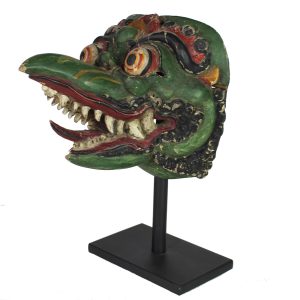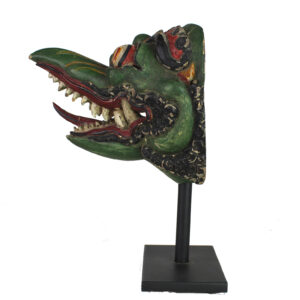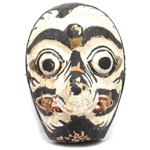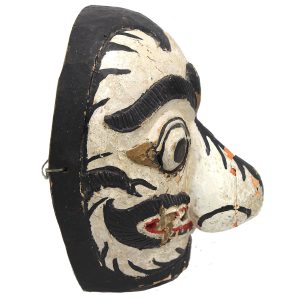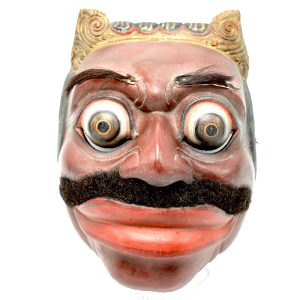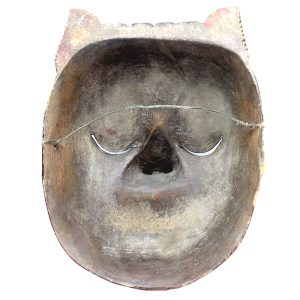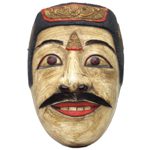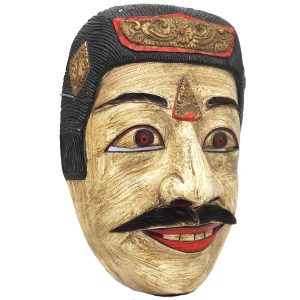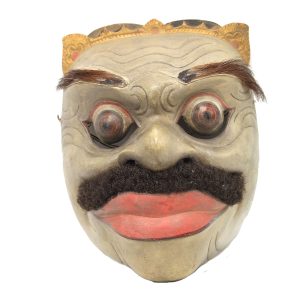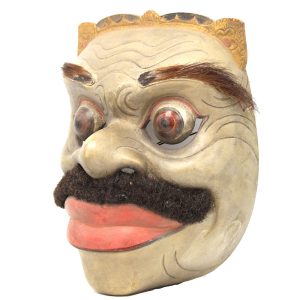-


$650.00
H: 13.75″ W: 3″. D: 3.75″ | CALL 213-568-3030 OR EMAIL [email protected] FOR SHIPPING.
Rare vintage Balinese mask of Jatayu used in performances of the Ramayana. Jatayu is the Hindu mythical vahana (vehicle) of Vishnu, one of the triad of principal Hindu gods. On a museum quality stand.
-


$165.00
Influenced by Islam for centuries, Javanese theater in Indonesia is stylized, didactic and full of central characters said to be cultural and historic icons of morality. Mask drama theater (Topeng Wayang) in Java is dominated by the conservative central Javanese palace courts (kraton) of Surakarta, Solo and Jogjakarta (Yogyakarta) which have long supported mask makers,…
-


$125.00
This ethnic and folk-art Bali legendary court minister (topeng patih) is performed in a special mask dance named Topeng Panjegan, as only one dancer interprets five different characters wearing full face masks preventing speech. Patih manis (Sweet Minister) is often the first solo dance after a gamelan orchestra introduction, and this patih keras (strong minister)…
-


$105.00
All ethnic mask (topeng) dances in Bali are accompanied with music from a gamelan percussion orchestra as are dramas and other entertainments considered as offerings to honor, please and attract the favor of the gods and ancestral spirits. In the west dancers put on masks to pretend they are someone else. Balinese dancers become the…
-


$125.00
Court ministers (patih) in Bali, Indonesia are danced in mask (topeng) performances named Topeng Panjegan where a single dancer interprets 5 legendary characters wearing full face masks, cannot speak and much portray them only through gestures and body language and positions. Patih manis (literally sweet, a good natured, diplomatic minister) is often the first solo…
End of content
End of content

